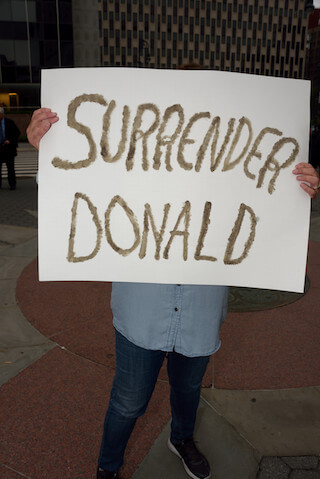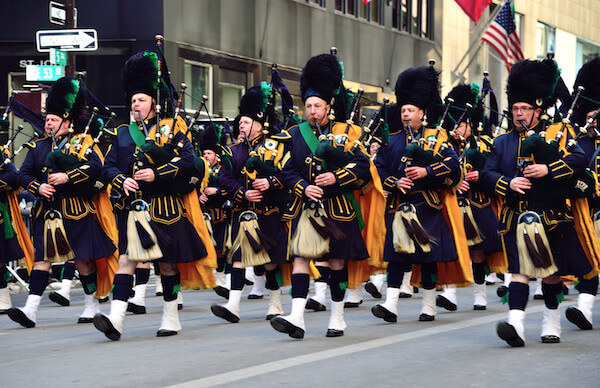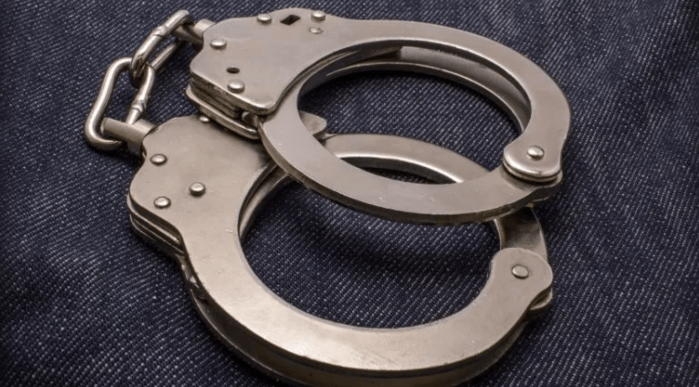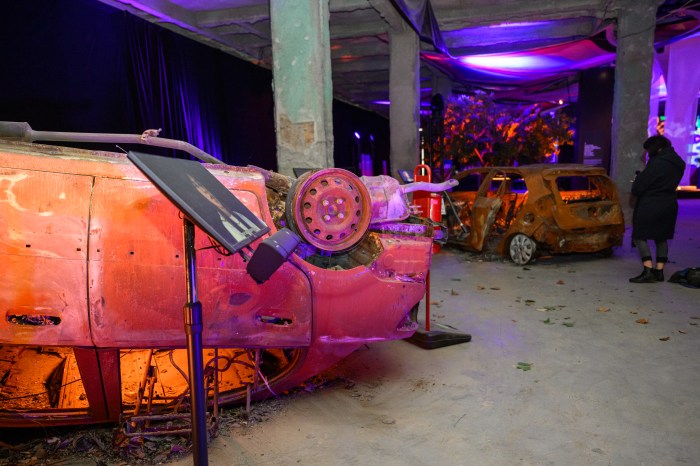Memorabilia recalling the outcry over the 1990 hate crime murder of Julio Rivera in Jackson Heights and the anti-gay opposition to the Children of the Rainbow school curriculum. | ANDY HUMM
Hundreds of proud activists crowded into the Queens Museum in Flushing Meadow Corona Park for the June 9 opening of an exhibit on the unique history of the LGBTQ movement in New York’s most diverse borough.
“Lavender Line: Coming Out in Queens” emptied the closet of out gay City Councilmember Daniel Dromm, a co-founder of the Queens Pride Parade, which was created 25 years ago in the wake of the hate crime murder of Julio Rivera and a massive controversy over including gay issues in a proposed multicultural school curricula dubbed “Children of the Rainbow.” It was that controversy that brought public school teacher Dromm out publicly.
Councilmember Daniel Dromm (center, with tie and jacket) joined by other veterans of the first Queens Pride Parade in 1993. | ANDY HUMM
The exhibit also includes contributions from out gay Council Majority Leader Jimmy Van Bramer, including the St. John’s University gay student group banner he helped carry in the first Pride march in 1993 in Jackson Heights, and photographs by Richard Shpuntoff, who documented the movement from that first march and directed a documentary, “Julio of Jackson Heights.”
“Lavender Line,” in Flushing Meadow through July 30, shows activists turning adversity into pride and power
The exhibit was opened by New York City First Lady Chirlane McCray, who called it “a story that has gone untold for too long.”
Maritza Martinez, a co-founder with Daniel Dromm of Queens Pride, which she co-chaired for a dozen years. | ANDY HUMM
Dromm paid tribute to the veteran activists in the room, including Alan Sack, “who cradled Julio Rivera as he died,” Ed Sedarbaum, “the grandfather or the movement” in Queens, Maritza Martinez, who co-chaired the Pride committee with Dromm for 12 years, the councilmember’s mother Audrey Gallagher, a founder of Queens PFLAG, and former State Senator Tom Duane, “the first grand marshal” of Pride.
“The LGBT movement in Queens is all about intersectionality — integrating an anti-racist, anti-xenophobic message. We are indeed your family, friends, and neighbors.”
Borough President Melinda Katz proclaimed June 9 “Queens Pride Day” and recalled writing her 1986 college thesis on how AIDS affected businesses in New York City.
Van Bramer spoke of the challenges of growing up gay in the borough on his way to becoming an activist and now the out majority leader of the Council.
“Our Pride Parade told generations of LGBT youth that you don’t have to move to be who you are,” he said.
Martinez said that when she and other organizers proposed a Pride March in Jackson Heights, “We were told it wouldn’t work and wouldn’t last. Twenty-five years later, it is larger than ever.”
The exhibit includes not just historical photographs and artifacts from the Queens LGBTQ movement, but audio and video interviews with leaders in the movement conducted by students from LaGuardia Community College, which organized the exhibit with the Queens Museum.
The South Asian Lesbian and Gay Association’s SALGA Dancers treated the crowd to lively choreography in the spirit of the multicultural borough.
Sedarbaum said, “It’s really nice that we can go down in history so young people can go ahead and reshape the world the way that they want.”
Councilmember Dromm with Alan Sack, who cradled Julio Rivera in his arms as the young man lay dying after being brutally attacked. | ANDY HUMM
Early anti-violence activism in Queens. | ANDY HUMM
A flyer from the first parade, showing then-Councilmember Tom Duane and State Assemblymember Deborah Glick among the grand marshals. | ANDY HUMM
Photos of Queens Pride celebrations over the past 25 years. | ANDY HUMM








































